The day before my 11th birthday, I woke up with blood in my underwear. I knew my period would come soon (I’d had “the talk”), but still. Nothing quite prepares you for it actually happening and feeling that crampy pain for the first time. The thing that sticks out the most, though? My mom giving me one of her huge, heavy-flow pads to use, which felt like a lumpy diaper. It was weird and embarrassing, and I hated it!
When my mom went out and bought tampons, smaller pads, and panty liners for me to use instead, things got a lot better. If having period products that fit my body made things easier, imagine how amazing it would have been to have even more options for menstruation like girls today. From period cups to period panties — and organic versions of regular pads and tampons — there are some really cool products on the market that didn’t exist when today’s moms were teens.
Pads
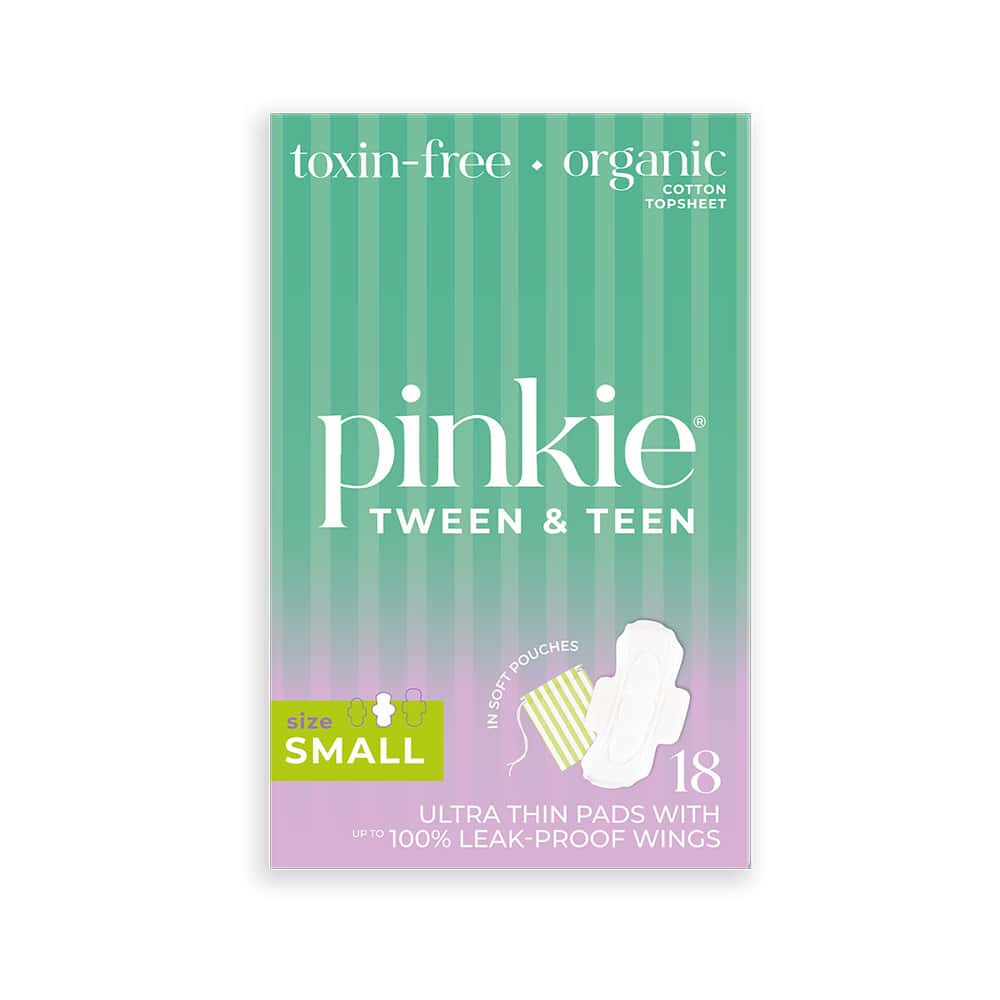
Pinkie Pads for Tween & Teen is a wonderful, toxin-free option for teens and tweens on their period.
©Pinkie Pads – Original
When your teen or tween starts their first period, they’ll likely use a pad, which is typically the best choice early on, according to Katherine Maslen, ND, clinical naturopath, nutritionist, author, and host of the docuseries The Shift on Women’s Health. Maslen, who speaks at high schools about periods and has a 12-year-old who recently started her period, explains that pads are great because they're easy for girls to use and they help them visually see the blood loss.
However, pads don’t come without any downsides. If your teen isn’t willing to check and change their pads frequently, this is probably not a great option. Also, it may be harder to find a pad that fits smaller bodies — and, of course, you can’t swim with a pad on.
One of the biggest risks of wearing pads is that some contain toxic chemicals and fragrances that Maslen said should be avoided. In fact, a 2024 study found that many menstrual products (including pads) contain endocrine disrupting chemicals such as phthalates, phenols, and parabens. Exposure to these chemicals could potentially impact a woman’s reproductive health.
Pinkie Pads are a wonderful option. These are made with a 100% organic top sheet with no toxins, dyes, chlorine, or fragrance. Their Tween & Teen design is super absorbent in a small size, with leak-proof wings. (No bulky diaper feeling here!)
Period Panties
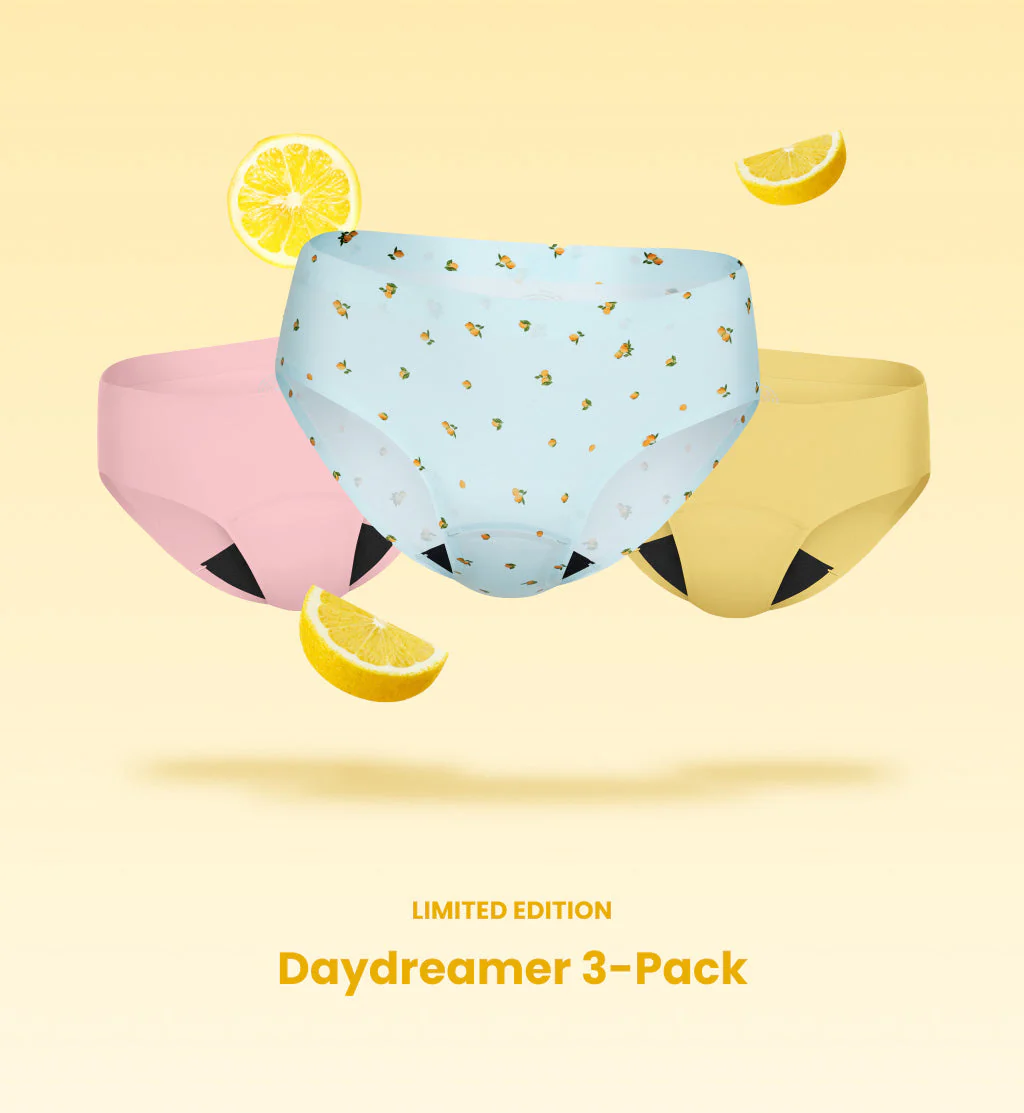
Kt by Knix Period Panties have built-in absorbency for ultimate comfort for your tween or teen.
©Kt by Knix – Original
When I was a teen, “period panties” referred to the old, blood-stained pair of underwear that you washed and wore every period, so you didn’t accidentally ruin another pair of underwear. Now, it’s so much cooler! These specially designed briefs are made to absorb period blood without anything extra, so it feels more comfortable.
Kt by Knix offers a variety of cute colors, patterns, and styles of period panties, made with 360LeakSeal patented technology to protect leakage. These are seamless and quick-drying, made to absorb up to two-and-a-half tampons’ worth of blood.
One big downside is that period panties have been linked to per- and polyfluoroalkyl substances (PFAS), which are also known as “forever chemicals.” According to the U.S. Environmental Protection Agency, these chemicals (which are also found in drinking water, cosmetics, food and food packaging, and other household and personal care products) can cause infertility, developmental delays in children, increased risk of cancer, and other issues.
“Using period underwear/panties can be convenient and better for the environment, but they can sometimes be made from toxic materials that could contain PFAS,” says Maslen.
Check the product before you use it to see if they test for PFAS. Knix has been routine testing their period products since Jan. 2020, and you can see lab results of their most recent test online at Knix.com. They also advocate for increased PFAS regulation and education and do not intentionally use PFAS in the manufacturing of their leakproof products.
When it comes to using period underwear, it may also be difficult for your teen to know when to change and it can be hard to manage carrying around dirty underwear at school or an extracurricular activity.
Menstrual Cup & Discs
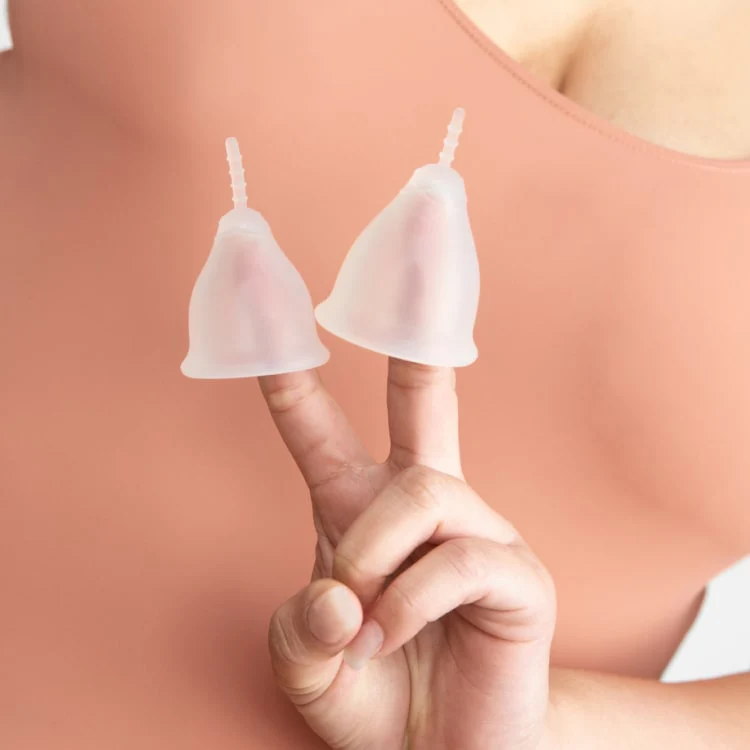
Cora's The Easy-Does-It-Cup has a notched finger indent to make it easy to insert.
©Cora – Original
According to Maslen, menstrual cups and discs could be a preferred option for older teens who understand the basics of their period and anatomy. These soft, reusable silicone products are better for the environment, save money, and can last for up to 8-12 hours, depending on the product. However, Maslen warns that you need to ensure you are buying a product made with a safe, medical grade silicone.
Cora’s The Easy-Does-It-Cup was named “Best Menstrual Cup for Beginners” by Wirecutter. It’s designed with an intuitive finger indent, so you know exactly where to place your finger when folding and inserting the cup into your vaginal canal (it’s as easy as using a tampon and can be reused up to 10 years!).
This menstrual cup is made with a premium medical-grade silicone that is soft and flexible, and made without dyes, phthalates, latex, and BPA. It also has a textured base so you know where to grab when it’s time to reuse. The cup uses suction to seal and collects blood instead of absorbing it, which could be a problem for someone with a heavier flow.
Keep in mind that if your teen has a heavy flow, a cup could overflow and cause a disaster at school.
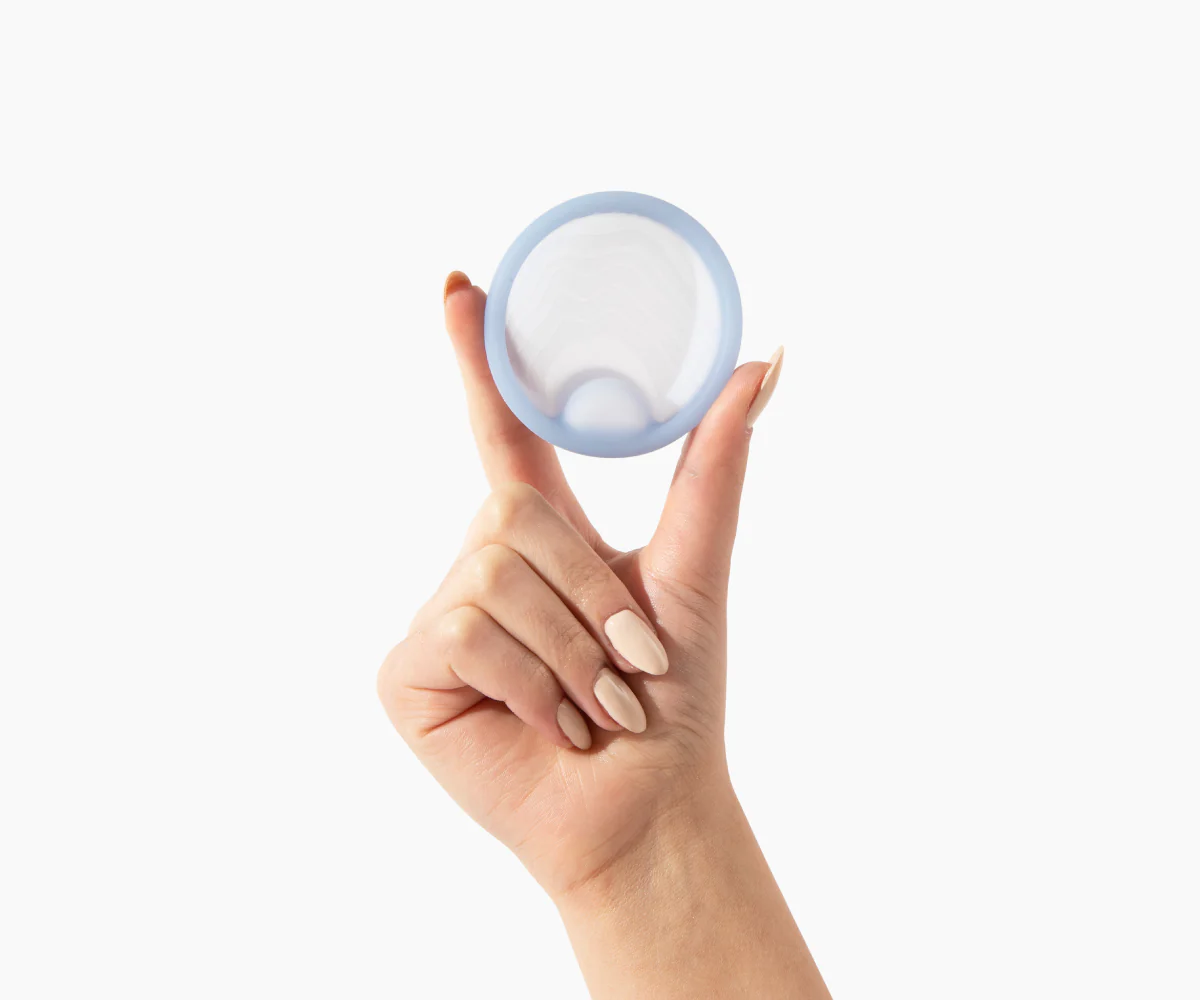
The Saalt Period Disc goes up against your cervix.
©Saalt – Original
A menstrual disc, on the other hand, sits at the base of the cervix, rather than a vaginal canal, and doesn’t require suction. It’s also self-emptying when you use the restroom, allowing excess blood to go into the toilet when the pelvic floor muscles contract and temporarily displace the disc. The Saalt Period Disc is great for light or heavy flows and is made with a smooth flexible rim, custom removal notch, and a comfortable basin that collects 4-6 times more than a tampon does, depending on if you order a small or regular.
“I've tried many cups and discs but this is the best disc I've used so far,” one happy customer used. “I love the grip part because it makes it easy to remove it!”
The Saalt disc can be worn up to 12 hours at a time and is reusable for up to 10 years.
Tampons

Look for organic tampons like Rael Tampons and ensure your teen or tween changes their tampon every 4-8 hours.
©Rael – Original
Although tampons were the go-to period product for me and my friends, Maslen doesn’t recommend them for newly menstruating teens.
“Early on in menstruation I don't advise tampons because they can easily be forgotten and it is harder to monitor the amount of blood or know when to change them,” Maslen says.
The pros include being able to swim and play sports with them, but there are many cons as well. Tampons are more difficult to use, easy to forget about, and potentially made with chemicals that can easily be absorbed through the vaginal wall.
If you do opt for tampons for your tween or teen, Maslen recommends getting organic ones and being sure that your child never wears a tampon longer than 8 hours to lower their risk of toxic shock syndrome (TSS).
Rael Tampons were praised as “easy to get in, even if you’re a tween having your very first period” by Teen Vogue. These are made with 100% certified organic cotton that is chlorine-, fragrance-, and pesticides-free, with a BPA-free compact applicator.
The U.S. Food and Drug Administration explains that TSS is a rare but life-threatening condition produced by certain kinds of bacteria. Rates of reported TSS cases associated with tampons have declined significantly over the years, and your chances are lower if you follow all directions, change a tampon every 4-8 hours, wash your hands before and after using a tampon, and use the lowest absorbency needed.
How to Help Your Teen Choose
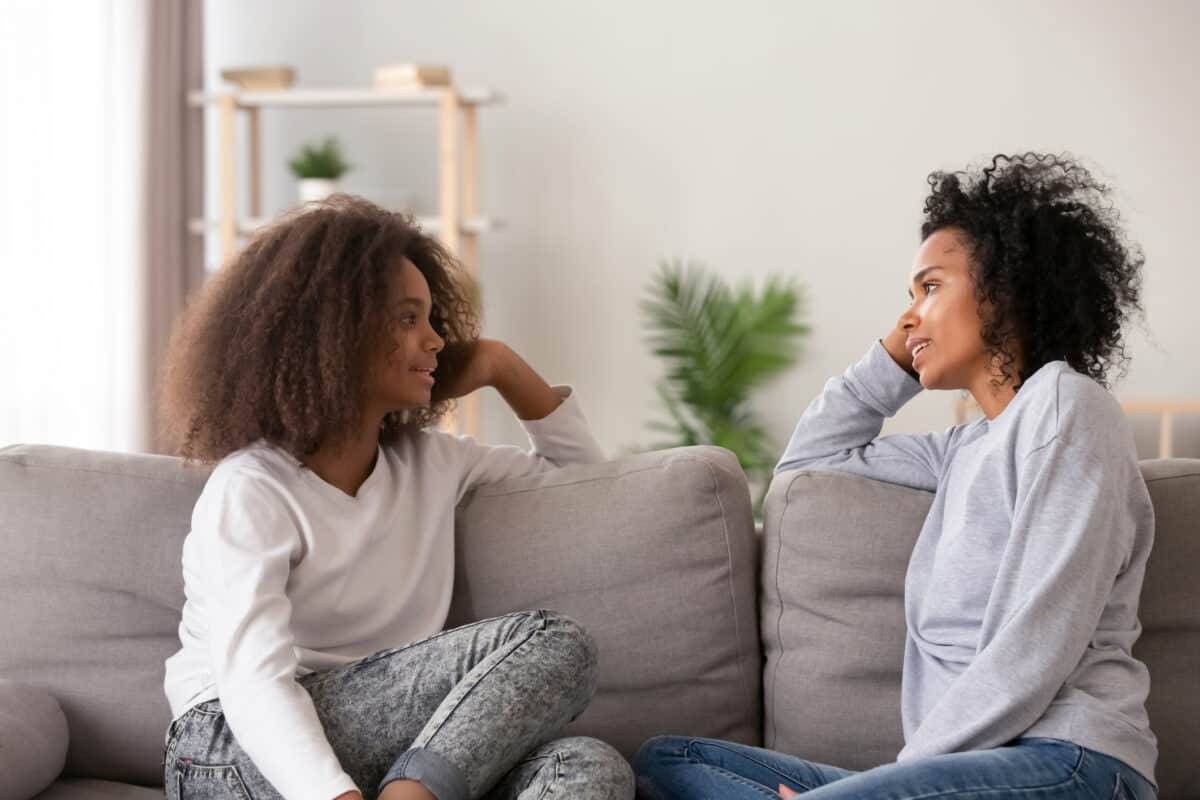
Keep the lines of communication about periods open with your teen, to make their first period exciting and not scary.
©iStock.com/fizkes
So you’ve researched the pros and cons of all the cool options for menstruation products. But how do you help your teen choose the right products? Maslen has been there, and she has a few tips.
Start with knowledge. “It's best to ensure your teen is educated about her periods and what is physiologically happening in a non-shameful way,” Maslen suggests. “Talk to her about how periods are a normal function and how the uterus and vagina work. Use images and videos to show what happens when you use a tampon, a pad, a cup so that you can show her what options are available for her.”
Next, create a period pack. Buy organic and/or non-scented pads in a few different sizes and put them in a cute pencil case or small bag along with spare underwear and a zip lock bag in case of any accidents at school, suggests Maslen. She went so far as to throw a period party for her daughter where she let her do whatever she wanted for 24 hours, cooked her favorite meals, watched movies with her, and did everything possible to make her feel special.
Finally, be willing to switch things up. Just because you don’t like period discs or find period panties don’t work for you doesn't mean they won't work for you teen. The truth is, period products are a personal choice, and you should encourage your tween or teen to try different things to see what works for them. Maslen recommends assuring them that if something isn't working, they can always switch brands or products to find something that works better.
When to Call a Doctor
Periods are natural and healthy, but that doesn’t mean they always come without complications.
Call your child’s doctor if they:
- Are 15 and haven’t started their period.
- Have had their period for more than 2 years, and it’s still not regular.
- Have bleeding between periods.
- Have severe cramps that don’t get better with over-the-counter pain medication like ibuprofen.
- Have very heavy bleeding that goes through a pad or tampon faster than every one hour.
- Have periods that last more than a week.
- Have severe PMS that gets in the way of everyday activities.
While there are some variations of normal, some of issues could be signs of endometriosis or another condition.
Normalize Periods
“Teaching our teens and pre-teens how normal periods are and getting them ready for this transition is so important,” Maslen says. “Kids are entering menarche earlier and earlier then before – and being younger, they are often less mature and less ready to deal with periods. If we keep the conversation open and normalize this fact of life, then when it comes up it isn't scary.”
The image featured at the top of this post is ©fizkes/Shutterstock.com
